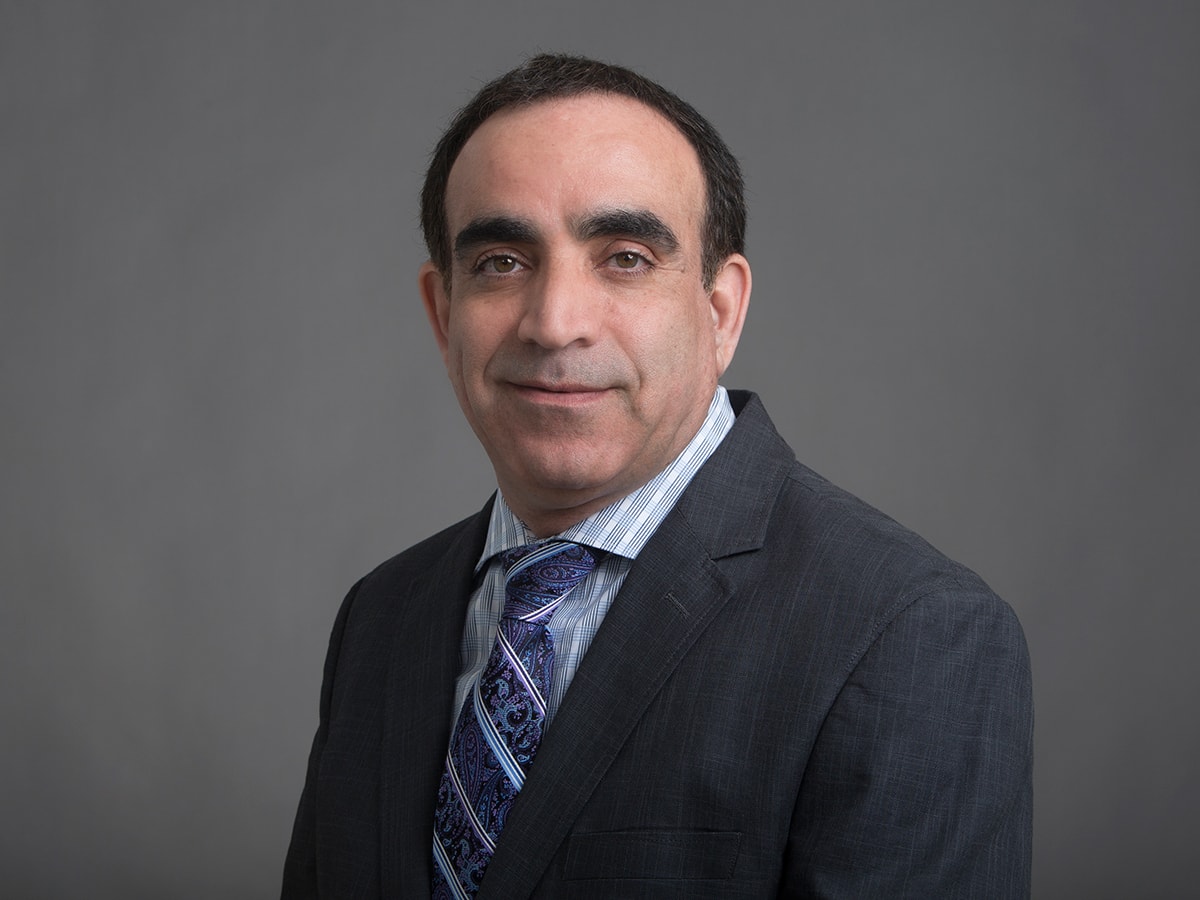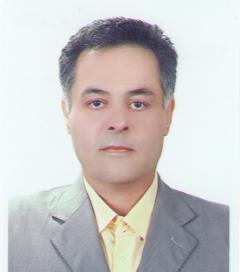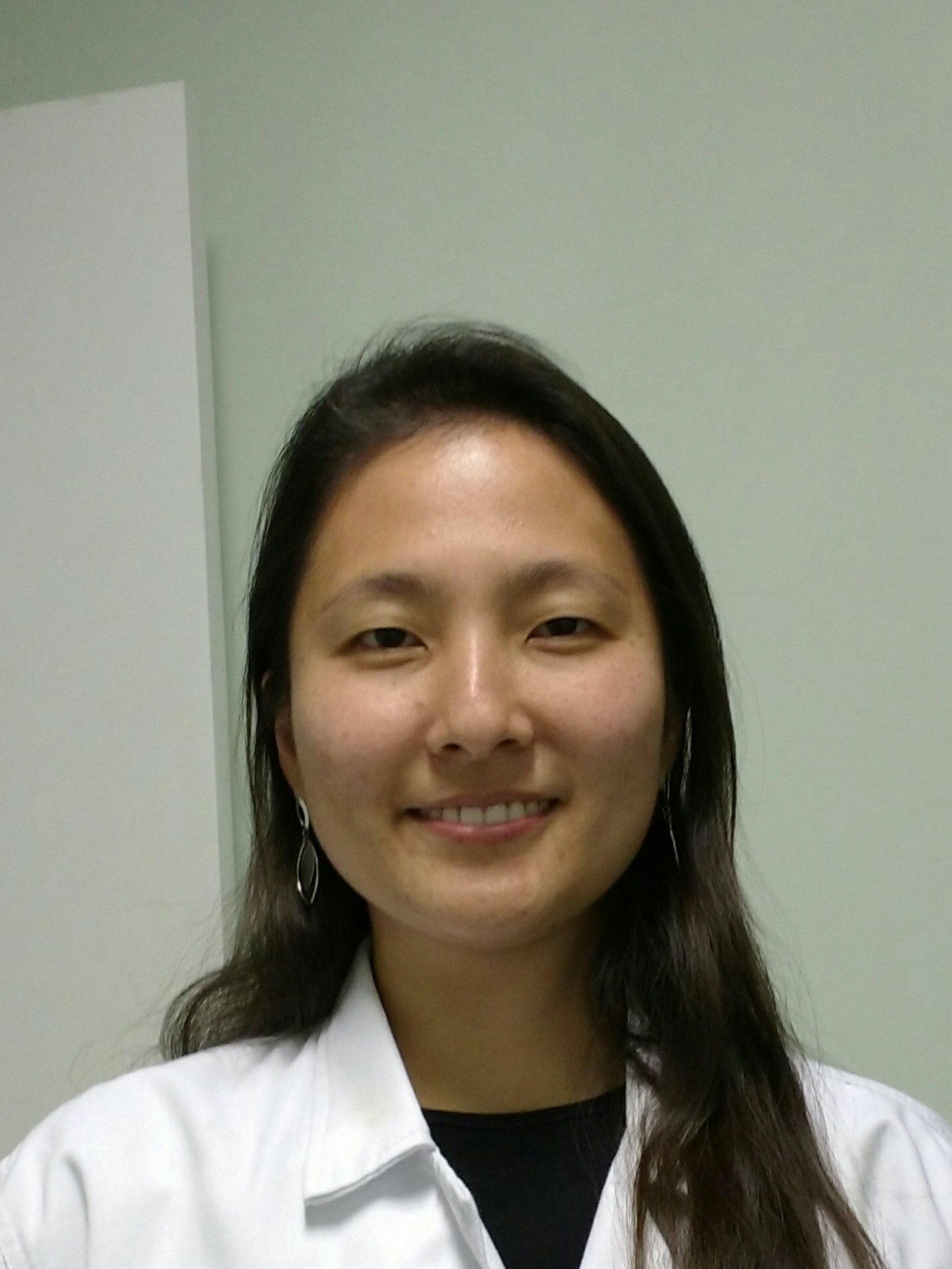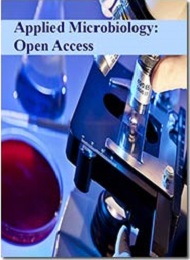Theme: Innovations in Microbial Pathogenesis
Microbial Pathogenesis 2017
“The good physicians treat the disease; The great physicians treat the patient who has the disease.”- William Osler
ConferenceSeries Ltd welcomes you to attend the International Conference on Microbial Pathogenesis & Host Response Mechanism during Aug 23-24, 2017, Toronto, Canada.We cordially invite all the participants who are interested in sharing their knowledge and research in the arena of Microbial Pathogenesis.
The main theme of this event is "Innovations in Microbial Pathogenesis".
Microbial Pathognesis-2017 anticipates more than 200 participants around the globe with thought provoking Keynote lectures, Oral and Poster presentations. The attending delegates include Editorial Board Members of related ConferenceSeries Ltd Journals. This is an excellent opportunity for the delegates from Universities and Institutes to interact with the world class Scientists. The intending participants can confirm their participation by registering at Microbial Pathogenesis 2017 along with your colleagues.
What is Pathogenesis?
Pathogenesis is explained as cellular events, reactions and other pathologic mechanisms occurring in the development of disease. Microbial pathogenesis is the mechanism by which micro-organisms cause infectious illness
Who are Attending Microbial Pathogenesis Conferences?
-
Deans, Vice Deans and Vice Presidents of Institutions and Hospitals.
-
Professors, Delegates and Students from academia who are in the field of Pathology, Microbial Pathology.
-
Pathologists, Doctors, Director and Managers from business organizations.
-
We are seeking attendees from all the Pathology related departments.
Benefits of attending Microbial Pathogenesis Conference ?
-
An opportunity to meet the mentors across the world face-to-face.
-
Sharing ideas, challenges and plan something interesting for future
-
B2B Meetings.
-
To meet the experts in the field of Microbial Pathology.
-
To share the knowledge with doctors and Scientists.
- To gain advance knowledge in Microbial Pathology.
-
To meet investors from different sector of Healthcare.
-
To develop collaborations between Acaemic and Business.
-
Thought provoking talks by Doctors,Professors,PhD's and Young Researchers.
Microbial Pathogenesis Related Association & Societies:
- American Microbiology Society
- American Bacteriologists Society
- International Microbial Ecology Society
- Clinical Immunology Society
- Indian Immunology Society
- Immunologists Association of America
- British Society for Immunology
- International Union of Immunological Societies
- Immunological Societies of Asia-Oceania Federation
- Immunological Societies of European Federation
- Irish Clinical Microbiologists Society
- Medical Microbiology and Infectious Disease Association of Canada
- Swiss Microbiology Society
- Virology Society of America
- Applied Microbiology Society
- Infectious Diseases Society of America
- Pediatric Infectious Diseases Society
- Infectious Diseases Society of New York
- The Australian Society for Microbiology
- Parasitologists Society for America
- British Society For Parasitology
- Australian Society for Parasitology
- Indian Parasitology Society
- Parasitological Society of Southern Africa
The International conference on Microbial Pathogenesis is going to be held at during Aug 23-24, 2017, Toronto, Canada hosted by Conferences Series LLC.The conference is organized with the theme "Innovations in Microbial Pathogenesis" which comprises more than 15 sessions/tracks designed to offer comprehensive sessions that address current issues in the field of microbial pathology.
Microbial Pathology is a sub-topic of pathology which is a branch of medical science primarily concerning the molecular and cellular mechanisms of infectious diseases. Microbial pathogenesis uses the techniques of clinical microbiology, immunology, molecular pathology, medical microbiology, and molecular genetics. Microbial pathology deals with medical technologists, hospital administrations, and referring physicians. Physicians and laboratory technical staff work in close collaboration to provide microbial diagnostic pathology services.
Theme: Innovations in Microbial Pathogenesis
Track 1: Microbial Pathogenesis
Microbial Pathogenesis mainly deals with the molecular and cellular mechanisms of infectious diseases. It covers microbiology, host-pathogen connection and immunology related to infectious agents, including microorganisms, growths, infections and protozoa. Microbial pathogens incorporate microscopic organisms, infections, growths, and parasites and together record for a huge rate of intense and unending human illnesses. To comprehension the instruments by which different pathogens cause human malady, research in microbial pathogenesis likewise addresses systems of antimicrobial resistance and the advancement of new antimicrobial specialists and immunizations. Host-microorganism associations require an interdisciplinary methodology, including microbiology, genomics, informatics, molecular and cell science, natural chemistry, immunology, and the study of disease transmission.
Related Conferences :
Infectious diseases prevention Conferences, November 28-29, 2016, Spain; Bacteriology Conferences, May 16-18, 2016, USA; Paediatric Infectious Diseases conferences of the European Society; Oct 19-21, 2016, Boston, United States; Clinical Microbiology conferences, September 15-18, 2016, Rovaniemi, Finland; Immunology Conferences, October 24-26, 2016, Chicago, USA,
Track 2:Neuro-Infectious Diseases
Viral and immune mediated disorders of the nervous system are among the foremost difficult neurological disorders. The most common neuroimmune disorder is multiple sclerosis; and HIV is the most common viral infection of the nervous system. Common to disorders is the progressive loss of neurons, resulting in significant cognitive and motor dysfunction. The brain is a direct target for certain infections, and may also be indirectly affected by systemic bacterial, viral, or parasitic infections. Certain pathogens, like the human immunodeficiency virus (HIV), syphilis, West Nile Virus, Borrelia burgdorferi (resulting in Lyme disease), and other viral brain infections occur in healthy persons. Other infections, such as fungal infections or rarer parasites tend to most commonly affect people with reduced immune systems from cancer, chemotherapy, immunosuppressive therapy, or transplantation. Several infectious diseases can affect the brain, spinal cord, peripheral nerves, neuromuscular junction (the connection between the nerve ending and the muscle), or the muscles.
Related Conferences :
Pathology Conferences, April 20-21, 2017, Las Vegas, USA; Immunology Conferences, October 24-26, 2016, Chicago, USA; Parasitology Conferences, August 01-03, 2016, Manchester, UK; Haematology Conferences, October 03-05, 2016, Orlando, USA; Pathologists Meeting, October 02-04, 2017, Melbourne, Australia; Paediatric Infectious Diseases conferences of the European Society, Oct 19-21, 2016, Boston, United States
Track 3: Immunology of Infectious Diseases
The battle between pathogens and therefore the host immune defenses has raged for thousands of years. The system has developed a range of approaches to controlling viral and bacterial infection, that vary from direct killing of pathogen to elaborating cytokines that inhibit replication. Pathogens have countered by developing a range of immune evasion mechanisms that inhibit cytokine function and inhibit immune recognition of infected cells. Immunology describes how the body copes with microbial, viral, or parasitic infections, cancer, and other diseases. It needs expertise and analysis from the level of the molecules and cells of the immune system all the way up to disease dynamics in populations and ecosystems. Infectious and immune-mediated diseases currently under study include HIV/AIDS, Tuberculosis, Chagas, Malaria, Pneumonia, Enteric Diseases, Inflammatory Bowel, and Autoimmune diseases. Additional immunologic studies focus on genetic regulation of the immune response, the interplay between the innate immune system and intestinal microbial communities, the function and regulation of T-cell-derived cytokines and cytokines involved in the regulation of inflammation.
Related Conferences :
Paediatric Infectious Diseases Conferences, August 24-25, 2016, Philadelphia, Pennsylvania, USA; Emerging Infectious Diseases Conferences, Aug 24-26, Atlanta, Georgia; Bacteriology Conferences on Infectious Diseases, May 16-18, 2016, USA; Clinical Microbiology conferences on infectious diseases, September 15-18, 2016, Rovaniemi, Finland; Infectious diseases prevention Conferences, November 28-29, 2016, Spain
Track 4: Bacterial pathogenesis
Bacterial pathogenesis is the process by which bacteria cause infectious diseases. Most diseases are caused by multiple processes. Most maladies are brought on by numerous procedures. One of the bacterial sicknesses with the most elevated infection weight is tuberculosis, brought about by the bacterium Mycobacterium tuberculosis. Pathogenic microscopic organisms add to other universally critical infections, for example, pneumonia, which can be brought about by microorganisms, for example, Streptococcus and Pseudomonas, and foodborne ailments, which can be created by microbes, for example, Campylobacter, and Salmonella. Pathogenic microscopic organisms additionally cause infections such as tetanus, typhoid fever, diphtheria, and leprosy. Pathogenic microscopic organisms are additionally the reason for high baby death rates in creating nations. Koch's postulates are the standard to establish a causative relationship between a microbe and a disease.
Related Conferences :
Chemistry Conferences, August 08-10, 2016, Toronto, Canada; Biochemistry Conferences, October 10-12, 2016, Kuala Lumpur, Malaysia; Clinical Pharmacy Conferences, November 07-09, 2016, Las Vegas, USA; Pathology Conferences, April 20-21, 2017, Las Vegas, USA; Immunology Conferences, October 24-26, 2016, Chicago, USA; Infectious diseases prevention Conferences, November 28-29, 2016, Spain
Track 5: Viral pathogenesis
Viral pathogenesis is the procedure by which infections produce disease in the host. The elements that decide the viral transmission and advancement of illness in the host include complex and dynamic connections between the infection and the susceptible host. Infections cause malady when they break the host's essential physical and normal defensive barriers; evade local, tissue, and immune defences; spread in the body; and destroy cells either specifically or through observer safe and provocative reactions. Viral pathogenesis can be partitioned into a few phases, including transmission and passage of the infection into the host, spread in the host, tropism, virulence, patterns of viral infection and disease, host factors, and host defence. An important part of viral pathogenesis is viral the study of disease transmission since it permits doctors to contemplate the dissemination of determinants of sickness in human populations.
Related Conferences :
Diagnostic Microbiology Conferences, October 3-5, 2016, Vancouver, Canada; Clinical Microbiology Conferences, October 20-22, 2016, Rome, Italy; Parasitology Conferences, August 01-03, 2016, Manchester, UK; Pathology Conferences, September 25-29, 2016, Cologne, Germany; Bacteriology Conferences on Infectious Diseases, May 16-18, 2016, USA
Track 6: Fungal pathogenesis
Fungal pathogenesis is the procedure by which organisms contaminate and cause malady in a host. Not all organisms are pathogens and have the capacity for pathogenesis, otherwise called virulence. We all have regular contact with fungi. They are so generally circulated in our surroundings that a huge number of contagious spores are breathed in or ingested each day. Progressive systemic fungal infections pose some of the most difficult diagnostic and therapeutic problems in infectious disease, particularly among immune compromised patients to whom they are a noteworthy risk. Compared with bacterial, viral, and parasitic disease, less is known about the pathogenic mechanisms and virulence factors related in fungal infections. Analogies to bacterial illnesses come the nearest due to the evident significance of adherence to mucosal surfaces, obtrusiveness, extracellular items, and cooperation with phagocytes.
Related Conferences :
Pathology Conferences, May 09-11, 2016, Chicago, USA; Pathologists Meeting, October 10-12, 2016, Manchester, UK; Haematology Conferences, October 03-05, 2016, Orlando , USA; Infectious diseases prevention Conferences, November 28-29, 2016, Spain; Biochemistry Conferences, October 10-12, 2016, Kuala Lumpur, Malaysia; Chemistry Conferences, August 08-10, 2016, Toronto, Canada
Track 7: Antimicrobials
An antimicrobial is an agent that kills or inhibits the growth of microorganisms. The microbial agent may be a chemical compounds or physical agents. Antimicrobial medicines may be sorted in keeping with the microorganisms they act primarily against. As an example, antibiotics are used against bacteria and antifungals are used against fungi. They can also be classified according to their function. Agents that kill microbes are called microbicidal, whereas those who simply inhibit their growth are called biostatic. The utilization of antimicrobial medicines to treat infection is known as antimicrobial chemotherapy, whereas the utilization of antimicrobial medicine to prevent infection is known as antimicrobial prophylaxis. These agents interfere with the growth and reproduction of causative organisms like bacteria, fungi, parasites, virus etc. The main categories of antimicrobial agents are disinfectants, which kill a wide range of microbes on non-living surfaces to prevent the spread of illness, antiseptics which are applied to living tissue and help to reduce infection throughout surgery, and antibiotics that destroy microorganisms inside the body.
Related Conferences :
Clinical Microbiology Conferences, October 20-22, 2016, Rome, Italy; Industrial Microbiology Conferences, August 01-03, 2016, Frankfurt; Microbiology Conferences, August 04-06, 2016, Frankfurt, Germany; Parasitology Conferences, August 01-03, 2016, Manchester, UK; Mycology Conferences, September 12-14, San Antonio, USA
Track 8: Medical Microbiology
Medical Microbiology is the branch of medicine involved with the prevention, diagnosis, and treatment of infections and communicable diseases. There are four kinds of microorganisms that cause infectious disease: bacteria, fungi, parasites and viruses, and one type of infectious protein called prion. A medical life scientist studies the characteristics of pathogens,their modes of transmission, mechanisms of infection and growth. Medical microbiologists usually serve as consultants for physicians, providing identification of pathogens and suggesting treatment options. The interaction between a pathogen and its host cell has become increasingly important to understand and interfere with diseases caused by microbial pathogens.
Related Conferences :
Rare Diseases and Orphan Drugs Conferences, Oct 26-27, 2016, USA; Chronic Obstructive Pulmonary Diseases Conferences, July 11-12, 2016 Australia; Bacteriology Conferences, May 16-18, 2016, USA; Mycology Conferences, September 12-14, San Antonio, USA; Influenza Respiratory Diseases Conferences; Children Vaccines Conferences, October 10-12, 2016 Kuala Lumpur, Malaysia
Track 9: Clinical Microbiology
Clinical Microbiology mainly deals with the lab determination of human and animal infections and the role of the lab in both the administration of infectious diseases and the clarification of the study of disease transmission of diseases. Bacterial, protozoan, and infectious agent pathogens have advanced a decent type of instruments to discover themselves inside the host and pick up supplements that conjointly cause mischief and ailment. Clinical microbiologist contemplates the non-pathogenic species to figure out if their properties can be utilized to create anti-infection agents or other treatment strategies.
Related Conferences :
Influenza Conferences, September 12-13, 2016, Berlin, Germany; Flu Conferences, October 31- November 02, 2016, USA; HIV/AIDS, STD's and STI's Conferences, Atlanta, USA; Industrial Microbiology Conferences, August 01-03, 2016, Frankfurt; Mycology Conferences, September 12-14, San Antonio, USA; Immunologist Meeting, July 03-05, 2017, Malaysia, Kuala Lumpur
Track 10:Microbial genetics
Genetics is the science of heredity and genetic information in a cell. Genetic information pasess from cell to cell as well as from genereation to generation.Genetic information is stored in the form of either DNA or RNA in all the lining organisms. Microbial genetics is the study of genome or the genetic material of microorganisms. Most of the bacteria and viruses have RNA as the genetic material. Retroviruses are the viruses with DNA as genetic material and caused AIDS in humans. Microbial genetics plays a crucial role in field of molecular and cell biology and profound applications in medicine, food, agriculture and pharmaceutical industries. It also involves the transmission of hereditary characters in microbes.
Related Conferences :
Molecular Pathology Conferences, August 17-18, 2017, Los Angeles, USA; Cytopathology & Histopathology Conferences, June 26-28, 2017, Philadelphia, USA; Pathology Conferences, August 13-15, 2017, Rome, Italy; Haematology Conferences, October 03-05, 2016, Orlando, USA; Pathologists Meeting, October 02-04, 2017, Melbourne, Australia
Track 11: Diagnostic Immunology
Immunodiagnostics is a diagnostic process that uses an antigen-antibody reaction as their primary source of detection. To detect the disease caused by infectious microorganisms, immunoassays have been developed. These biochemical and serological methods depend on the discovery of antibodies produced against infectious agent, a microbe, or non-microbial antigen. Serological tests are performed on blood serum, and body liquids, for example, semen and salivation. It’s usually refers to the diagnostic identification of antibodies in the serum or the detection of antigens of infectious agents in serum. Enzyme-linked immune sorbent assay is a measurement technique for identification an antigen immobilized on a strong surface and uses a particular immune response with a covalently coupled compound. The measure of immune response that ties the antigen is relative to the measure of antigen present, which is dictated by spectrophotometry technique. Diagnostic immunology created for progression in mechanized fields. Diagnostic immunology takes a shot at the immunization field for security against HIV infection.
Related Conferences :
Immunology Conferences, Dec 12-13, 2016, Bangkok, Thailand; Immunologist Meeting, July 03-05, 2017, Malaysia, Kuala Lumpur; Influenza Respiratory Diseases Conferences; Children Vaccines Conferences, October 10-12, 2016 Kuala Lumpur, Malaysia; Vaccines & Vaccination Conferences, November 24-26, 2016, Melbourne, Australia; Travel Medicine, Vaccines & Therapeutics Conferences, August 01-02, 2016, New Orleans, USA
Track 12: Microbial Vaccine and Drugs
A vaccine is a biological preparation that gives dynamic procured safety to a specific malady. A vaccine typically contains an agent that look like a disease-causing micro-organism and is often made from weakened or killed forms of the microbe, its toxins or one of its surface proteins. The agent releases the body's immune system to recognize the agent as a threat, destroy it, and keep a record of it, so that the immune system can more easily recognize and destroy any of these micro-organisms that it later encounters. A drug may be classified by the chemical type of the active ingredient or by the way it is utilized to treat a specific condition. Each drug can be classified into one or more drug classes.
Related Conferences :
Medical Case Reports Conferences, Valencia, Spain; Clinical Case Reports Conferences, Dubai, UAE; Medical Case Reports Conferences, New Orleans, USA; Retroviruses and Novel Drugs Conferences, June 30-July 1 2016, South Africa; Food Safety and Regulatory Measures Conferences, London, UK; Bacteriology and Infectious Diseases Conferences, May 16-18 2016, USA
Track 13: Infectious diseases
Infectious diseases are disorders caused by organisms for example, microscopic organisms, viruses, fungi or parasites. Many organisms live in and on our bodies. Some infectious diseases can be passed from individual to individual. Some are transmitted by bites from insects. Others are obtained by ingesting defiled nourishment or water or being exposed to organisms in the environment. Signs and side effects differ contingent upon the living being bringing about the contamination, yet frequently incorporate fever and exhaustion. Mild infections may react to rest and home cures, while some life-debilitating diseases may require hospitalization. Many infectious diseases, for example, measles and chickenpox, can prevent by vaccines. Continuous and intensive hand-washing likewise shields you from most infectious diseases. Hosts can fight infections using their immune system. Mammalian hosts react to infections with an innate response, followed by an adaptive response.
Related Conferences :
Digital Pathology Conferences, October 10-11, 2016, Manchester, UK; Speech Language Pathology Conferences, November 14-15, 2016, Atlanta, USA; Pathology Conferences, April 20-21, 2017, Las Vegas, USA; Surgical Pathology Conferences, March 27-29, 2017, Madrid, Spain; Molecular Pathology Conferences, August 17-18, 2017, Los Angeles, USA; Cytopathology & Histopathology Conferences, June 26-28, 2017, Philadelphia, USA
Track 14: Applied Diagnostic Microbiology
Diagnostic microbiology deals with the latest developments in clinical microbiology and the diagnosis and treatment of infectious diseases. It relates with bacteriology, immunology, infectious diseases, mycology, parasitology, and virology. The analysis of a microbial disease starts with an appraisal of clinical and epidemiologic elements, prompting the plan of a symptomatic theory. Diagnostic microbiology can also be a part of developing a treatment plan. Organisms, for example, microbes and protozoans assume a part in numerous illness forms. A considerable lot of the procedures like microscopy, immunological tests, radiology, biomarker tests, ELISA, serology tests, immunization vectors are the major demonstrative tests that are as of now being used. Many microbes have developed resistance to medications. Thus, it is important for the researchers to discover more brilliant methods for diagnosing these microorganisms and their pathogenic instruments.
Related Conferences :
Molecular Medicine and Diagnostics Conferences, Miami, USA; Medical Imaging and Diagnosis Conferences, Chicago, USA; Biomarkers and Clinical Research Conferences, Baltimore, USA; Next Generation Sequencing Conferences, Berlin, Germany; Infection Prevention and Control Conferences, November 28 -29, 2016, Spain; Molecular Pathology Conferences, August 17-18, 2017, Los Angeles, USA
Track 15: Infection Control and Prevention
The infections caused by germs and which may infect any part of the body are called infectious diseases. Infection prevention and management demands a basic understanding of the epidemiology of diseases; risk factors that increase patient susceptibility to infection; and the practices, procedures and treatments that may result in infections. Infection prevention and management is useful to prevent the transmission of infectious diseases. Some infectious diseases are often prevented by avoiding direct contact with the contagious person. Infections can even be controlled and prevented by making public awareness on various infectious diseases and their outbreaks.
Related Conferences :
Neuroimmunology and Therapeutics Conferences, March 31-April 02, 2016, Atlanta, USA; Allergy, Asthma and Clinical Immunology Conferences, September 14-15, 2016, Amsterdam, Netherlands; Tumour Immunology and Immunotherapy Conferences, July 28-30, 2016, Melbourne, Australia; Chronic Obstructive Pulmonary Diseases Conferences, July 11-12, 2016 Australia.
Conference Highlights
- Bacterial pathogenesis
- Viral pathogenesis
- Fungal pathogenesis
- Clinical Microbiology
- Neuro-Infectious Diseases
- Applied Diagnostic Microbiology
- Microbial Vaccines and Drugs
- Microbial pathogenesis
- Microbial genomics
- Antimicrobials
- Medical Microbiology
- Diagnostic immunology
- Infectious Diseases
- Immunology of Infectious Diseases
- Infection Control and Prevention
To share your views and research, please click here to register for the Conference.
To Collaborate Scientific Professionals around the World
| Conference Date | August 23-24 , 2017 | ||
| Sponsors & Exhibitors |
|
||
| Speaker Opportunity Closed | Day 1 | Day 2 | |
| Poster Opportunity Closed | Click Here to View | ||
Useful Links
Special Issues
All accepted abstracts will be published in respective Our International Journals.
- Journal of Bacteriology & Parasitology
- Journal of Infectious Diseases and Diagnosis
- Journal of Applied Microbiology
Abstracts will be provided with Digital Object Identifier by























